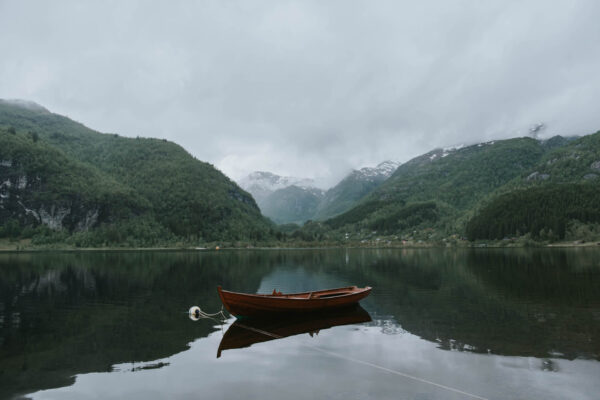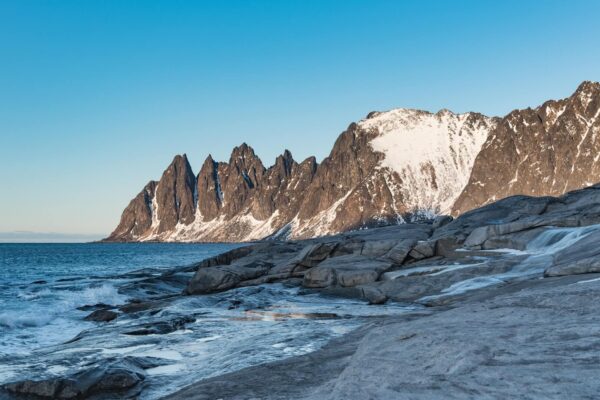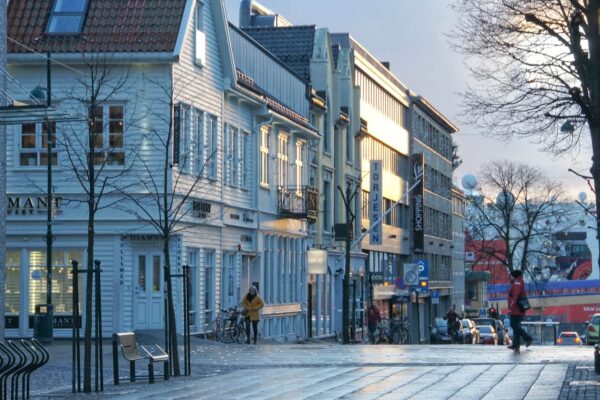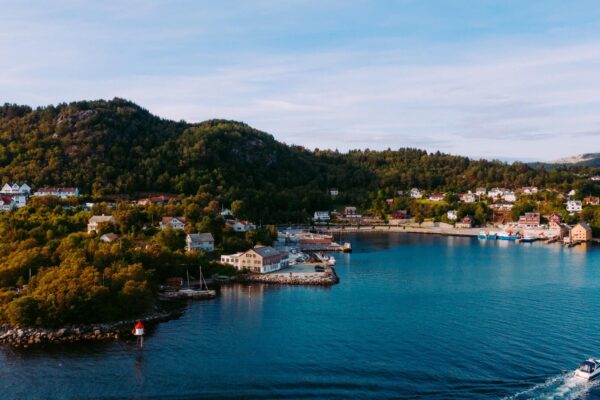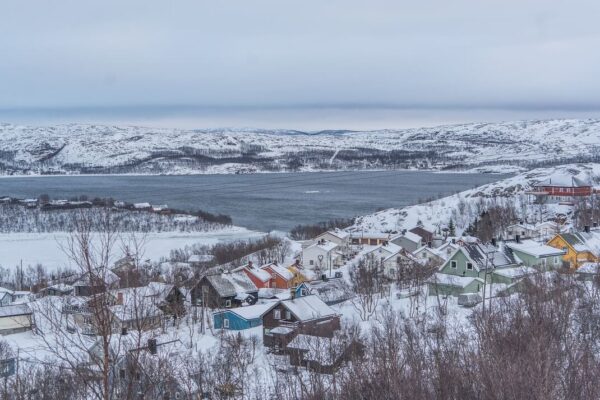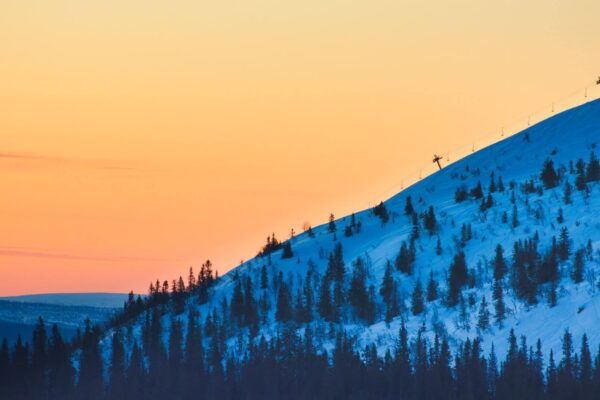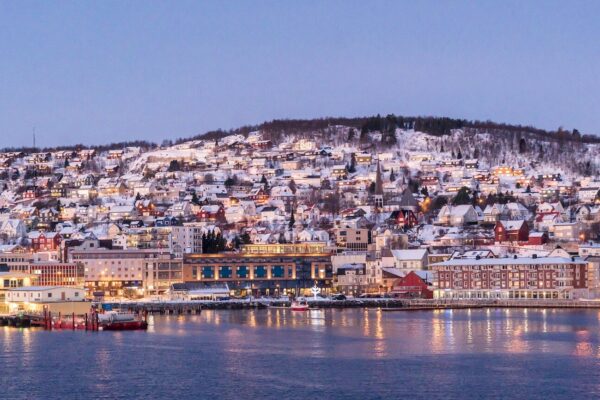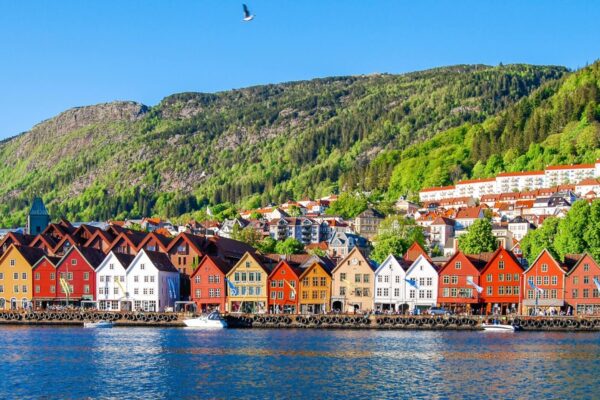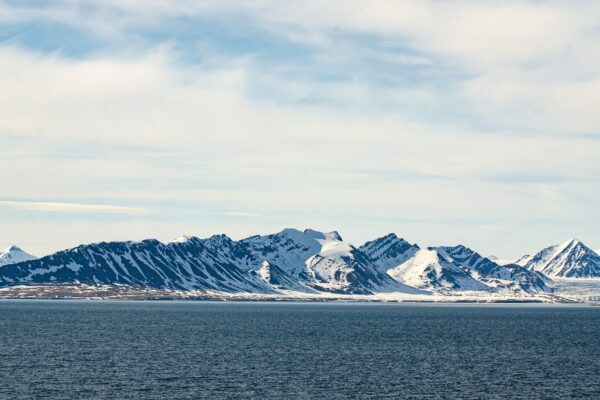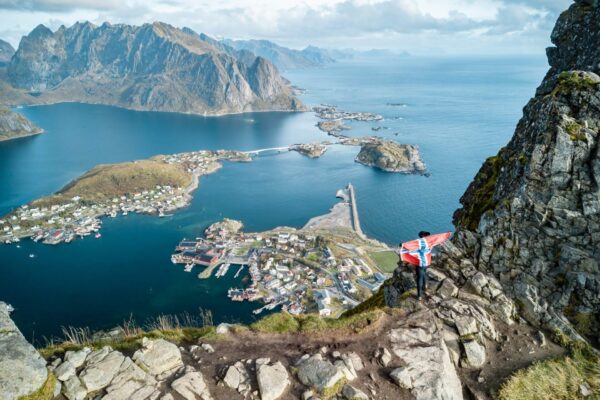Oslo offers modern architecture, an advanced infrastructure and is surrounded by impressive nature with its direct location at the fjord. That’s why the heart of Norway is not only perfect for a city trip, but also the perfect starting point for exploring the rest of the country. Here you will find tips and information about everything worth seeing in and outside the capital.
Oslo is the capital of the Kingdom of Norway and is located on the south coast of the country on the Oslofjord. The city is surrounded by forest and is a province in its own right. In the past, it was also called Christiania or Kristiania. Today, Oslo is not only the seat of government and the monarchy, but also the largest student city in Norway.
| Inhabitants | 697,000 |
|---|---|
| Area | 454,12 km² |
| Timezone | Central European Time (CET) |
What does Oslo have to offer?
The boring times are long gone: Norway’s vibrant and green capital has many facets and there is plenty to discover. In 2019, it was voted the European Green Capital. You can even go swimming or kayaking in the fjord right in the city.
Right next to it, new neighbourhoods with unique buildings are emerging, growing rapidly and transforming Oslo into a modern metropolis. The old harbour area Bjørvika combines the most impressive buildings in the entire city with futuristic shapes and large glass facades (see sights).
But Oslo is also home to charming neighbourhoods with small cafés, restaurants, shops, and cool street art. You can enjoy good food in a relaxed and contemporary way in food halls and food trucks. Oslo is close to nature, but still urban.
Incidentally, Norway’s most famous cycle marathon, Styrkeprøven, runs from Trondheim to Oslo. It is therefore known simply as Trondheim – Oslo . Participants have to cover a distance of 540 kilometres and thousands of metres in altitude.
Sights and activities
Opera
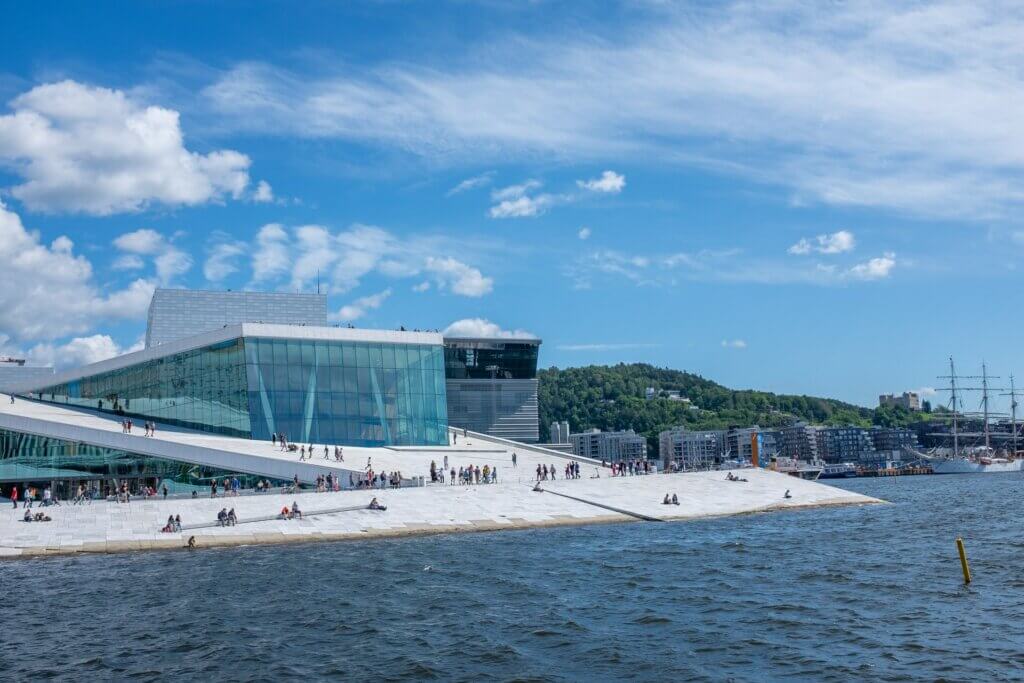
The opera house is Oslo’s landmark and immediately catches the eye with its modern design: It is said to be modelled on a floating iceberg. The facade is made of a mixture of marble and granite, wheras the roof is completely made of glass. The opera house is located directly on the water in the harbour basin and accomodates, among other things, the Great Hall, which is lined with fine oak wood. The Norwegian Opera has been performing here since 2008.
If you don’t necessarily want to attend a performance, you shouldn’t miss the building, as a walk on the ramp-like roof of the opera house is a must for tourists. If the weather is good, you can sit down and enjoy the view. The inside of the opera house is freely accessible outside performance times.
Library
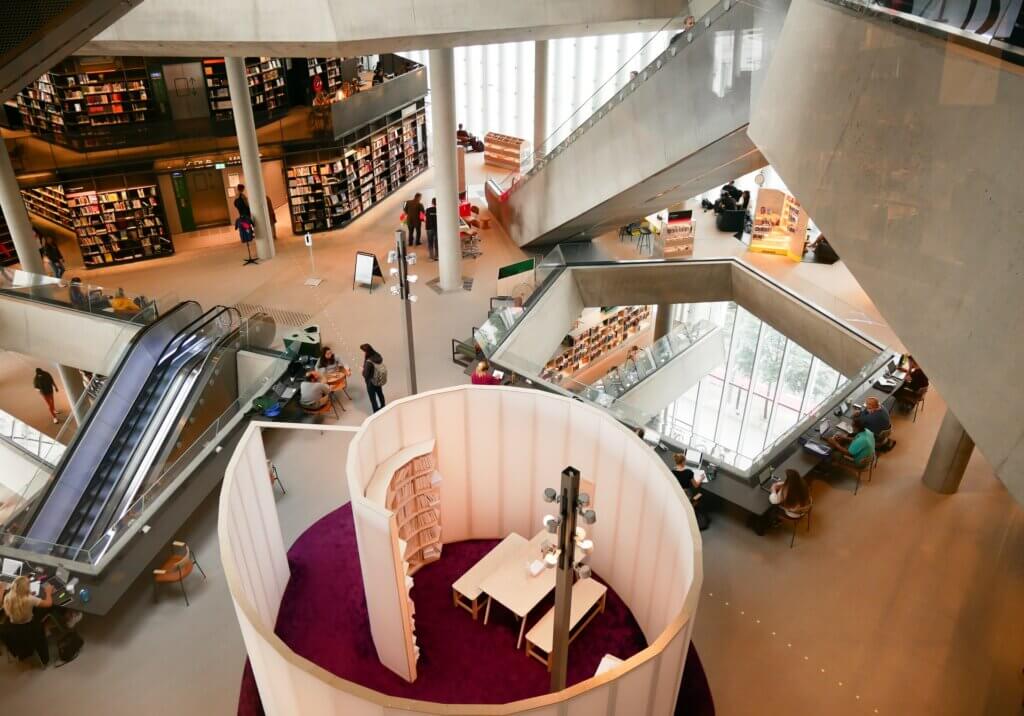
Right next to the opera house is another architectural highlight of the city: the main building of the Deichman Library (named after its founder) is one of the most modern libraries in Europe. It was opened in 2020 in the Bjørvika district, a former harbour area, and is actually home to much more than just a collection of books. On six open floors, there are various entertainment options, such as workshops with sewing machines and 3D printers, play areas for children, a small cinema, a gaming area, lounges and a restaurant.
The upper windows offer a view of the opera house, the boats and the harbour promenade. Further in the background, you can even see the hills and the fjord.
Munch Museum

Another new and futuristic building in the Bjørvika district is the Munch Museum, which opened in October 2021. It is also known as “Lambda” due to its spectacular shape. On display here are 28,000 works by the Norwegian painter Edvard Munch (including “The Scream”), which he bequeathed to the city of Oslo in 1940 – including paintings, sketches, photos and sculptures.
The expressionist grew up in Oslo and spent a large part of his life in the city. The original museum has been in existence since 1963 and in addition to the permanent Munch exhibition, there are also special exhibitions of modern art and various cultural events. Incidentally, the museum has a beach right outside the door.
University of Oslo
The city’s university may not be a classic sight, but it is still very impressive. It is the oldest and, after the university in Trondheim, the second largest university in the country with over 30,000 students. It not only comprises various buildings from old to modern on different campuses, but also several museums, including the Kulturhistorisk Museum and the Naturhistorisk Museum.
Royal Castle

If you are in Oslo, you should also visit the Royal Palace, which was built between 1824 and 1848. It is located to the west of the city centre and is surrounded by a large park. Among other things, it houses the King’s and Queen’s flats and is the meeting place for the King and Cabinet.
The changing of the guard takes place here every day at 1.30 pm. In summer, the palace is open to visitors and you can book a 60-minute guided tour.
TusenFryd Amusement Park
For adrenaline junkies, Norway’s largest amusement park is about 35 minutes’ drive from Oslo. If you prefer, take the route along the fjord, which is just a few minutes longer. The TusenFryd park in Vinterbro is open from May to October and offers fun for young and old: rollercoasters, water rides, carousels and much more. A great destination for families.
More museums

Oslo is the Norwegian city of museums. In addition to the Munch Museum, there are many more to discover. Those interested in culture and history can visit the Norwegian Open Air Museum with its old European buildings or the Viking Ship Museum, where the best-preserved ships from the 9th century are on display. Oslo also has a Maritime Museum, a Polar Ship Museum, a Technical Museum, a Ski Museum with a spectacular ski jump and many more – ideal if the weather is not the best.
The Nobel Peace Centre is worth a visit as well. It provides an insight into the history of the Nobel Peace Prize, which is awarded every year in Oslo, and introduces the prizewinners. The brand new National Museum just opened in 2022 and is the largest art museum in Scandinavia.
Excursions around Oslo: the Oslo region

The region around Oslo has a lot to offer, with Norway’s beautiful nature and various unique (art) museums. There are many idyllic coastal towns along the Oslofjord, which are ideal for strolling along the promenade or swimming, especially in summer: These include, for example, Vollen, Filtvet and Tofte, Holmsbu and Åsgårdstrand or Tønsberg, the oldest town in Norway. Here you can relax and enjoy yourself.
Just outside Oslo, only aabout 20 minutes by car, you can find the picturesque Lake Songsvann. In summer, it becomes the favourite swimming spot for city dwellers.
Tip: You can see even more of Norway on one of the most beautiful railway lines in Europe. The railway(Bergensbanen) runs from Oslo to Bergen and back, stopping at other towns and cities worth seeing. The 500-kilometre route through the midsts of the country leads past fjords and national parks.
Travelling to Oslo
Flights to Oslo
The best way to plan a city trip to Oslo is by plane. Oslo’s Gardermoen International Airport is about 40 minutes by car from the city centre. It can even be reached in just 20 minutes with the “Flytoget Airport Express” express trains.
Travelling in Oslo
There are various options for getting from A to B in Oslo and discovering the sights, which we present here:
Hop-On Hop-Off Bus
In spring and summer, a hop-on hop-off city tour is the easiest way to see all of Oslo’s main sights as comfortably and quickly as possible. The red double-decker bus travels through Oslo between April and September and offers audio guides with everything you need to know about the city.
Underground
The city’s underground is a particularly flexible way to get around while mingling with the locals. The so-called “Oslo T-bane” or “Tunnelbane” covers a large network throughout the city. The Oslo Pass is also worthwhile for holidaymakers: the card gives you admission to various attractions as well as tickets for all public transport and discounts in some restaurants.
Rental car
If you are travelling by plane and want to explore the area around Oslo, it is best to hire a car. Whether for a day trip to the seaside or for longer, you can find a suitable rental cars that you can easily book online.
Bicycle
Like the people of Oslo themselves, you can get around the city by bike – especially in spring and summer an environmentally friendly way to explore the city. This is particularly easy with the Oslo Bysykkel city bikes. These are available at around 250 stations throughout the city from the beginning of April to the end of November. With the app and a day pass, you can use them for 24 hours.

Hotels in Oslo
The best place to stay in Oslo is in one of the many hotels – ideally in the city centre. You will find everything from particularly elegant and comfortable accommodation, eco-certified hotels and modern design hotels to affordable hostels.
Weather and best travel time for Oslo
Due to its location at the fjord, Oslo has a maritime climate with a high probability of precipitation, especially in late summer. Nevertheless, summer is recommended as the best time to visit Oslo, as pleasant temperatures between 16 and 22 degrees can be expected and there are significantly more hours of sunshine than in winter (in winter the sun sets between 3 and 4 pm!).

